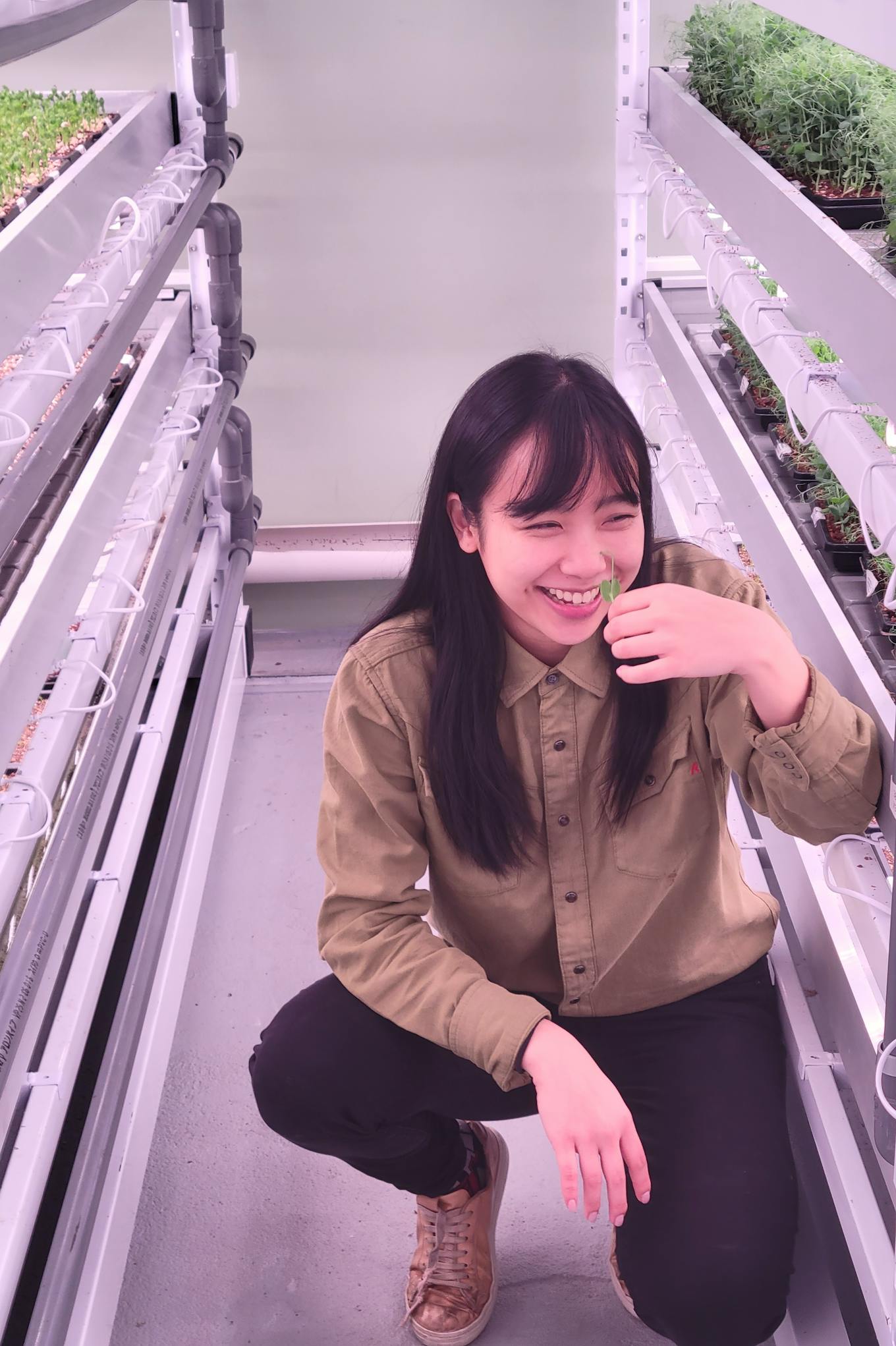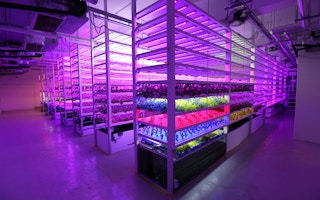Gordon Tam still remembers the disbelief that reverberated through Hong Kong when the government announced that the city would have to face a food shortage in early February 2022. The supply of local essentials such as fresh vegetables and chilled poultry, most of which is imported from mainland China, had dropped by 70 per cent after cross-border lorry drivers tested positive for Covid-19 and were not allowed into the city.
To continue reading, subscribe to Eco‑Business.
There's something for everyone. We offer a range of subscription plans.
- Access our stories and receive our Insights Weekly newsletter with the free EB Member plan.
- Unlock unlimited access to our content and archive with EB Circle.
- Publish your content with EB Premium.
The drivers – and their lorries full of produce – were held at border checkpoints and barred from entering, over fears of a highly-transmissible coronavirus variant infecting other residents. This was amid strict zero-Covid measures in mainland China and Hong Kong, which had then required the truckers and their close contacts to undergo lengthy mandatory quarantines if found to be infected.
“Most people in Hong Kong thought there would be an endless supply of food and produce until we experienced a shortage. Then we all started to worry,” said Tam, founder and chief executive of Farm66, an indoor farming company, known for starting the first indoor aquaponics farm in the city.
The shortage exposed Hong Kong’s overreliance on mainland China for produce, Tam told Eco-Business. This made people question the city’s level of food security, and why it didn’t have any contingencies in place such as a reliable supply of vegetables to tap into temporarily, he said.
“More than 90 per cent of our produce is from the Mainland and the rest comes from other countries; less than 2 per cent of vegetables are grown locally.”
While more than three-quarters of Hong Kong is made up of countryside such as woodlands and mountain ranges, the city now lacks the right farmland needed to grow crops. According to data from Hong Kong’s agriculture, fisheries and conservation department (AFCD), only about 7 square kilometres out of the territory’s 1,114 square kilometres of land area is farmed. The city’s climate also isn’t ideal for outdoor farming. “Pollution is an issue, there are typhoons in the summer months, and there isn’t enough regular sunshine,” Tam added.
Instead of being limited to plots of outdoor farmland susceptible to bad weather, Tam decided to start his own indoor farm. He founded Farm66 in 2013, converting a 3,000-square-foot room in an old industrial building into an indoor farm to grow leafy greens, herbs and fruits. As his company grew, he decided to move his business to a larger 20,000-square-foot space in Hong Kong Science Park, located in Hong Kong’s Sha Tin district, in 2018.

Gordon Tam is the chief executive officer and co-founder of Farm 66, an indoor farm in Hong Kong. Image: Farm 66
The facility uses its own patented aquaponics system to grow produce indoors, which sees fish and vegetables work together to create an arguably more organic solution compared to traditional aquaponics systems that use fertilisers. The vegetables are placed atop fish tanks, funnelling filtered water to the carp below during the watering process. The fish are fed vegetables unfit for sale, and their waste is used to fertilise the vegetables, which the company packages and sells to supermarkets, hotels and high-end retail stores.
A growing interest
Tam’s farm is one of a growing number of indoor farming companies that are sprouting up around Hong Kong and making use of the space available within and atop the city’s buildings to grow vegetables.
While it may be years before urban farms are able to reduce Hong Kong’s reliance on imports, the vegetable shortage seen in 2022 should be a wake-up call for both residents and the local government, said Raymond Mak, founder and CEO of Farmacy. His company partners with restaurants, hotels and households, helping them to grow vegetables using a mobile farming device that it had developed.
Mak said that Hong Kong should aim to have at least 10 per cent of its vegetables grown locally within the next decade or set a target similar to Singapore’s “30 by 30” initiative, which is part of the city-state’s efforts to build up its agri-food industry’s capability and capacity to produce 30 per cent of its nutritional needs locally and sustainably by 2030.
“The Singapore government is also aware that it is a tough key performance indicator to achieve, but they have still set a target. Hong Kong needs to set similar goals,” said Mak.
Hong Kong wasn’t always this reliant on imports. According to AFCD data, Hong Kong produced 30 to 50 per cent of what it consumed up until the 1980s, growing almost 195,000 tonnes of vegetables a year at its peak. The next 25 years saw the steepest decline in self-sufficiency, with vegetable production falling to 15,500 tonnes in 2015, and vegetable imports increasing to almost 816,000 tonnes that same year. As the city urbanised, public investments in agriculture decreased, leading to a decline in land, labour and produce.
While moving farming indoors may be a plausible solution to Hong Kong’s overreliance on imports, it will take time before self-sufficiency levels increase again, cautioned Mak. “Until local production of vegetables hits at least 10 per cent, it is hard to say whether urban farms can become a reliable secondary supply of fresh vegetables,” he said.
Though indoor farming is an effective means of producing vegetables, the sector is still nascent, and the lack of urban farming companies and farmers means that the industry still isn’t large enough to be relied on during a food shortage.

Farmacy partners with restaurants, hotels and households, and helps them to grow vegetables. Image: Farmacy
Nevertheless, urban farming companies should strive to continue expanding their operations and forge greater ties with more local customers and businesses, as doing so can ensure that demand and revenue remain steady and, in turn, enable business growth, Mak said. Having an ample supply of vegetables in reserve may also help the city weather the next unexpected food shortage.
“Hong Kong will never fully stop imports from mainland China and around the world, but when these ‘black swan’ or unexpected events such as vegetable supply chain disruptions take place, being able to tap into a supply of vegetables can go a long way. If we don’t start now, the situation will be even worse down the line.”
Reducing emissions
There is room for urban and indoor farming companies to grow, said Jessica Fong, founder and chief executive of Common Farms, another indoor farm business based in Hong Kong. Fong believes that consumers in Hong Kong are becoming increasingly conscious about where their food comes from. “Hong Kong is a sophisticated city, and nowadays people are more willing to pay a premium price for organic vegetables,” she said.

Jessica Fong is the founder and chief executive of Common Farms.
“If they have the option, consumers would always opt for high-quality vegetables and herbs that have been sourced locally, compared to produce that has been imported from a farm and had to pass through multiple intermediaries.”
The price of locally-grown vegetables is similar to that of imported organic produce. A 30-gram box of micro boy choy, generally used in salads and sandwiches, is listed for HK$40 on Common Farms’ website.
A September 2021 study conducted by Statista in cooperation with Rakuten Insight found that organic vegetables and fruits were the most sought-after products among Hongkongers, accounting for around 80 per cent of the response.
Fong runs a vertical indoor farm in Hong Kong’s Kwun Tong district, growing leafy vegetables, microgreens and edible flowers, which the company’s staff then delivers to her customers around the city.
Indoor farms are also able to reduce the overall carbon emissions that would otherwise be emitted through flights and road transport, known as Scope 3 emissions. “Hong Kong is a compact and dense city, so most deliveries are within one hour of our farm. We are saving carbon emissions in the long run when we distribute our produce,” she said, noting how some of their deliverymen would also bring the goods via public transport, or supply in bulk if they needed to drive.
Most people are still oblivious to how much carbon is generated from importing vegetables, Mak pointed out. He has calculated how much carbon the company saves by growing locally, and consistently relays this information to his company’s clients and stakeholders. Doing so, he added, provides them with a better understanding of not only his business but the long-term impact that indoor farming has on the environment.
“If one imports lettuce from the United States, for example, there are carbon emissions emitted from the point of harvest – including the journey to the airport, the flight to Hong Kong, the time the produce is kept in cold storage, the journey to the supermarket – to finally storing them in the supermarket. This all adds up,” Mak said.
Growing and distributing vegetables locally helps to ensure the freshness of vegetables, which Mak said quickly lose their nutritional value upon harvest. “Spinach loses 70 to 90 per cent of its nutritional value within 24 hours of being de-rooted if it isn’t placed in cold storage – this is why vegetables have to be bought from a fridge at a supermarket. These fridges are left on all day and night, generating a lot of carbon emissions.”
Tam agrees: “Indoor farms can ensure the freshness and affordability of vegetables, which by themselves aren’t expensive, but cost a lot to transport.”
Indoor farming companies should also find ways to responsibly cut their emissions throughout their operations, Mak added, such as by using the proper lighting to grow their vegetables. “Older models of LED lights aren’t able to save as much energy as newer models, which can save up to 10 times more electricity, emitting fewer carbon emissions in the long run. Lighting is also a huge driver of cost in our operating model, so I recommend all practitioners to look into what lights they are using.”
Buy local first
It is vital for current and prospective business owners of indoor farming companies to have a firm understanding of their customers and what vegetables, herbs or fruits they want, and then cater their business to meet these needs. “You can’t just start an indoor farming operation and expect it to succeed; you have to do the right research, understand your customers and grow vegetables that they want,” said Mak.
Fong notes that though indoor farms might not have a sizeable impact on Hong Kong’s food supply just yet, past experience proves that they have the potential to make a difference.
“During Covid-19, the city saw first-hand how vulnerable we were – we were at the mercy of what other countries could supply,” she said. “The priority is to get people to buy locally first and then consider imports to supplement what the local producers cannot provide.”

















